| |
|
|
 |
| |
|
|
 |
To kick off the first
Oktoberfest at
Six Flags Great Adventure in 1980, the park imported an
authentic Festhalle from Hanover, Germany. The building was designed to
be setup as a temporary building as part of an Oktoberfest celebration. The Festhalle
had a very traditional style and could hold up to 1500 guests.
Park president Larry Cochran had visited the Munich Oktoberfest in
1979 and decided that bringing an authentic structure to Great Adventure
was a "key ingredient" to creating a memorable event. The Garden of
Eatin' was remodeled in preparation for the arrival of the Festhalle and
Oktoberfest.
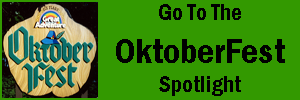 |
|
|
 |
| |
|
|
 |
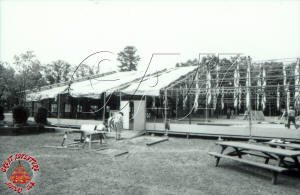 |
 |
| |
|
|
 |
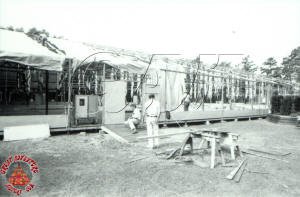 |
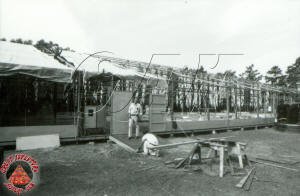 |
| |
|
|
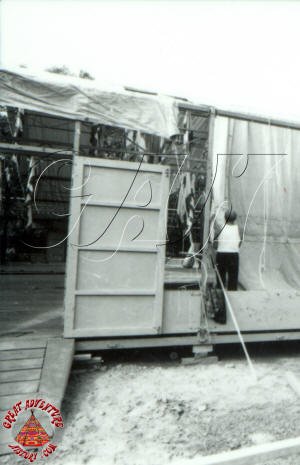 |
The Festhalle was
built on what would later become the site of the Fest Haus. Construction
began with setting up a huge wooden platform to serve at the building's
floor. The steel framework was then assembled that would create the
building's walls and roof. The canvas roof and walls were then stretched
over the frame. |
 |
| |
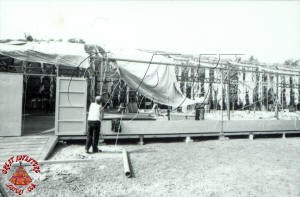 |
| |
|
|
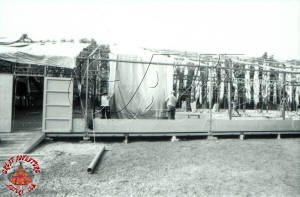 |
 |
 |
| |
|
|
 |
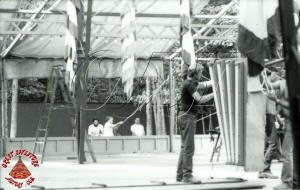 |
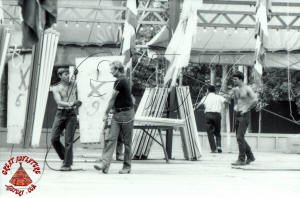 |
| |
|
|
 |
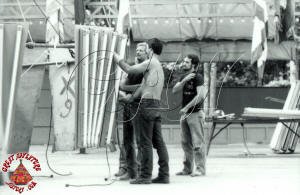 |
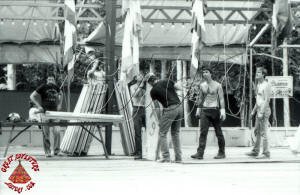 |
| |
|
|
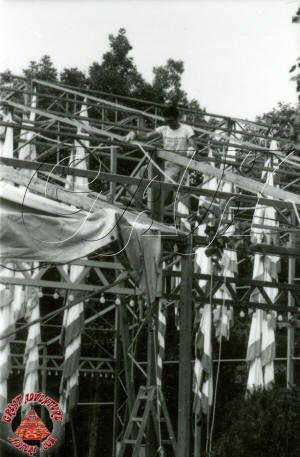 |
The Festhalle came complete with
decorations and lighting. The colorful interior banners were hung from
the rafters as they were put in place. |
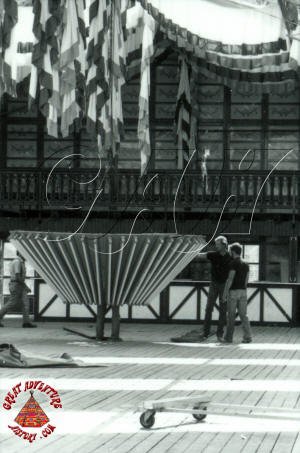 |
| |
|
|
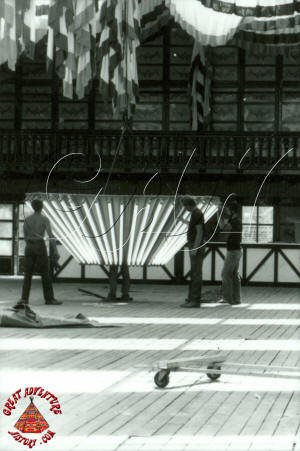 |
 |
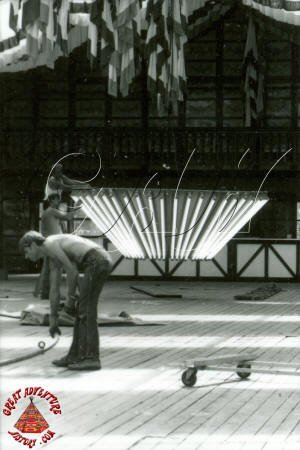 |
| |
|
|
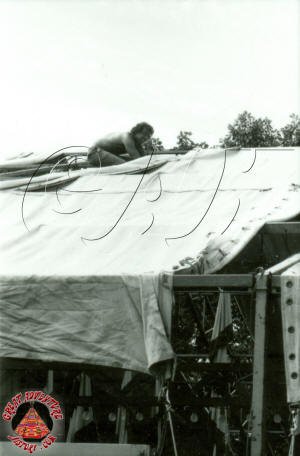 |
Once the structure
was up, the enormous chandeliers were assembled and raised up into the
ceiling. |
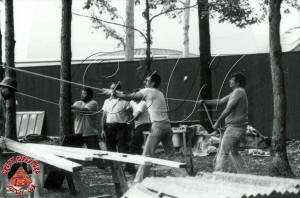 |
| |
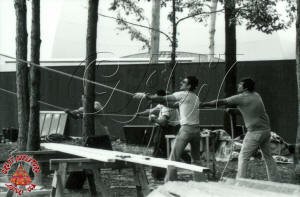 |
| |
|
|
 |
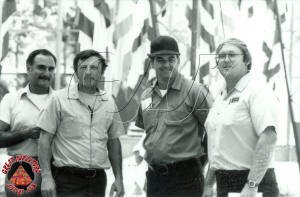 |
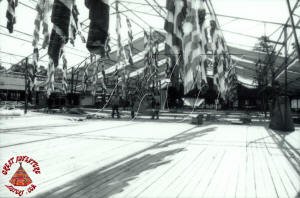 |
| |
|
|
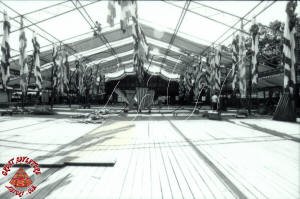 |
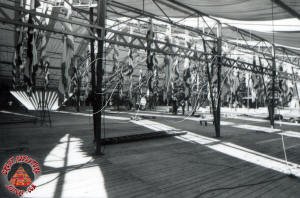 |
 |
| |
|
|
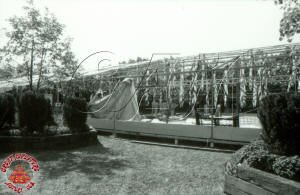 |
The enormous
structure quickly took shape in preparation for the Oktoberfest crowds. |
 |
| |
|
 |
 |
| |
|
|
 |
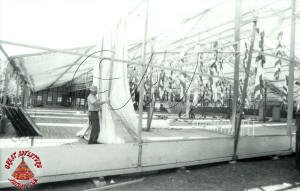 |
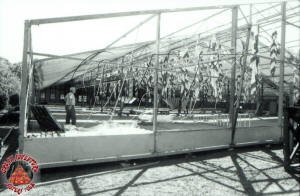 |
| |
|
|
 |
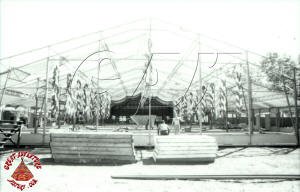 |
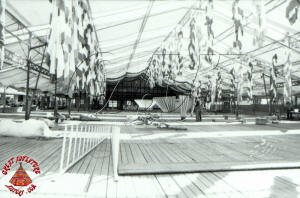 |
| |
|
|
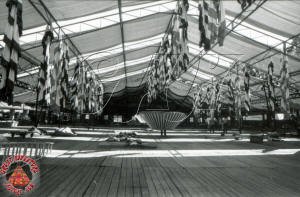 |
Other features of the
building included decorative panels for the front facade which gave the Festhalle a chalet-like appearance including windows and doors. The
interior side featured decorative scrolls and a faux-wood railing. A bar
was located at the front of the building between the entrance and exit doors. |
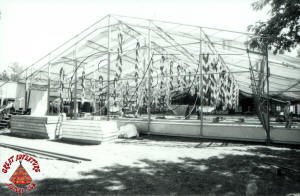 |
| |
|
 |
 |
| |
|
|
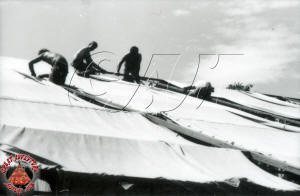 |
 |
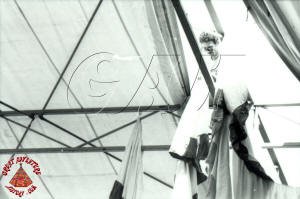 |
| |
|
|
 |
For a portable temporary
structure, the Festhalle was really quite impressive in size and scope.
The colorful banners that festooned the building really set the stage
for the festivities to take place. |
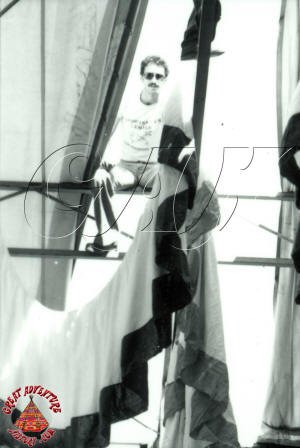 |
| |
|
|
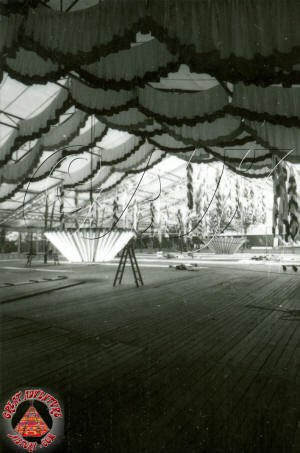 |
 |
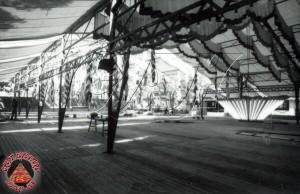 |
| |
|
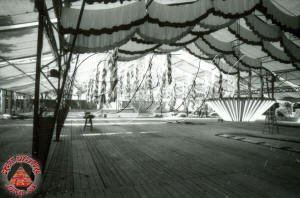 |
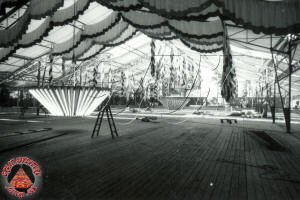 |
| |
|
|
| The interior of the Festhalle was
setup with long rows of tables running the length of the hall, covered
with brightly colored checkered tablecloths. |
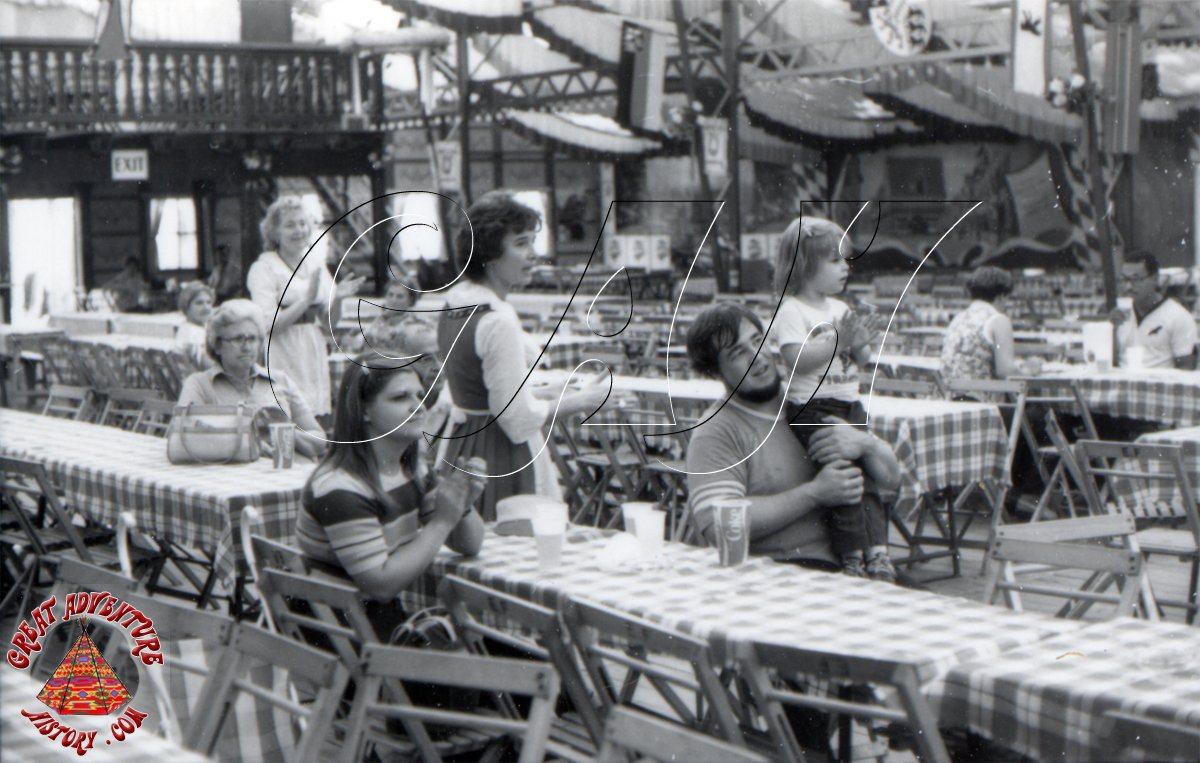 |
| |
|
|
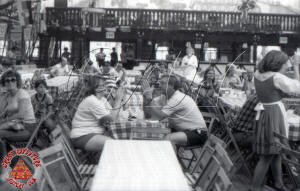 |
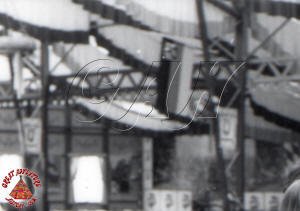 |
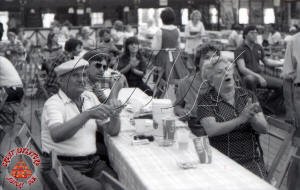 |
| |
|
|
 |
The idea of
Oktoberfest is to celebrate the harvest with food and drink. Soft drinks
and beer were available along with authentic German food and pretzels.
Beer was sold by the cup as well as by the pitcher. The pitchers
even featured Great Adventure's Oktoberfest logo.
Smoking was still allowed inside bars and restaurants in 1980, and glass
ashtrays dotted the rows of tables adding to the beer hall atmosphere. |
 |
| |
|
 |
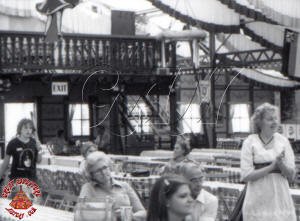 |
| |
|
|
 |
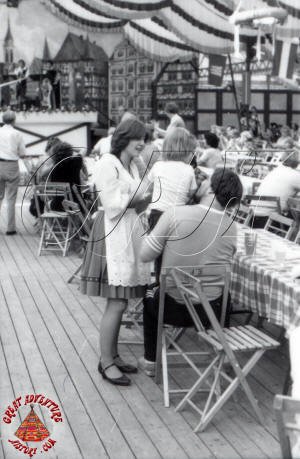 |
 |
| |
|
|
 |
The far end of the Festhalle
featured a stage for the bands and dancers to perform throughout the
day. The back wall behind the stage featured a giant mural of a German
village with half timbered buildings and church spires.
A Great Adventure rainbow logo was included in the German backdrop to
remind people where they were when viewing their photographs in years to
come. |
 |
| |
|
|
 |
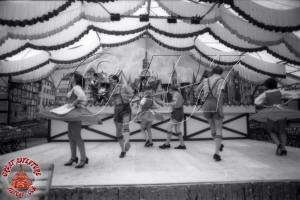 |
 |
| |
|
|
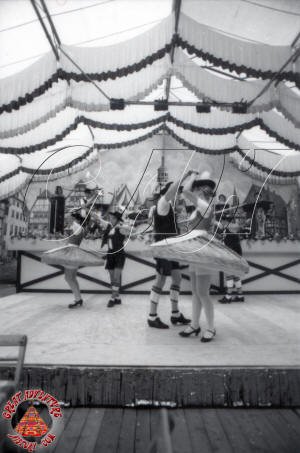 |
Throughout the day traditional
oompah bands played complete with giant alp horns. Costumed Shuplatter
dancers performed the traditional dances, spinning in intricate patterns
for the clapping crowds.
The Festhalle was disassembled and shipped back to Germany after the
festival. The park retained the tables and chairs. These
would reappear each Oktoberfest at the park, all the way until 1992. |
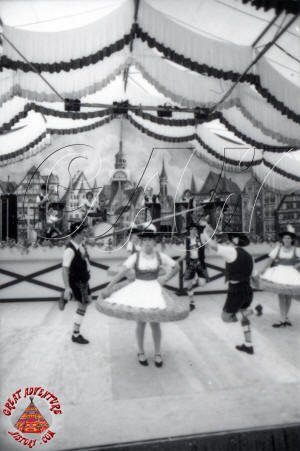 |
| |
|
|
 |
 |
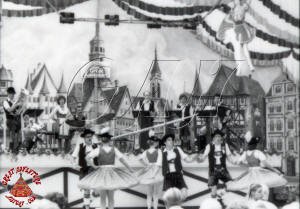 |
| |
|
|
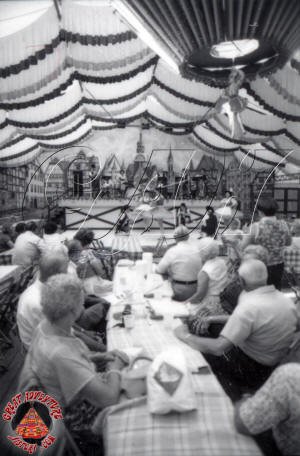 |
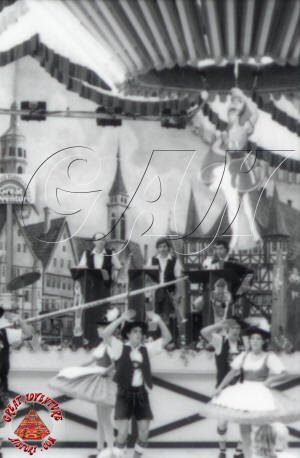 |
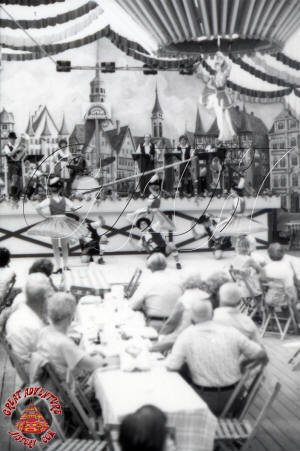 |
| |
|
|
| |
| Today's "Fest Haus" - The Maple Picnic
Grove |
| |
|
|
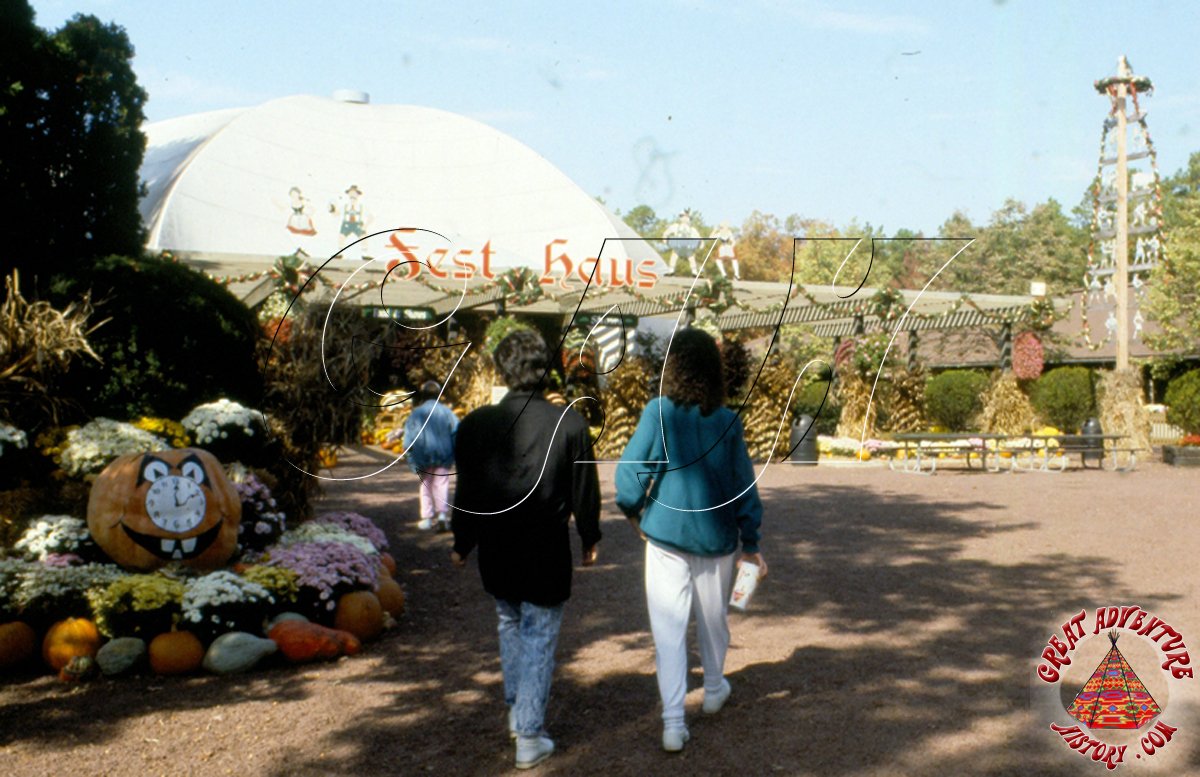 |
With the success of the 1980
Oktoberfest, a permanent Fest Haus was built to replace the temporary
Festhalle. The new Fest Haus was even larger and featured many of the
same authentic details found in the original Festhalle. The Fest Haus
still stands today as the Maple Pavilion in the Old Country Picnic
Grove. |
|
|
|
|
 |
 |
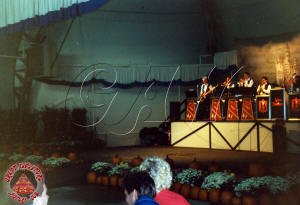 |
| |
|
|
| |
|
|




